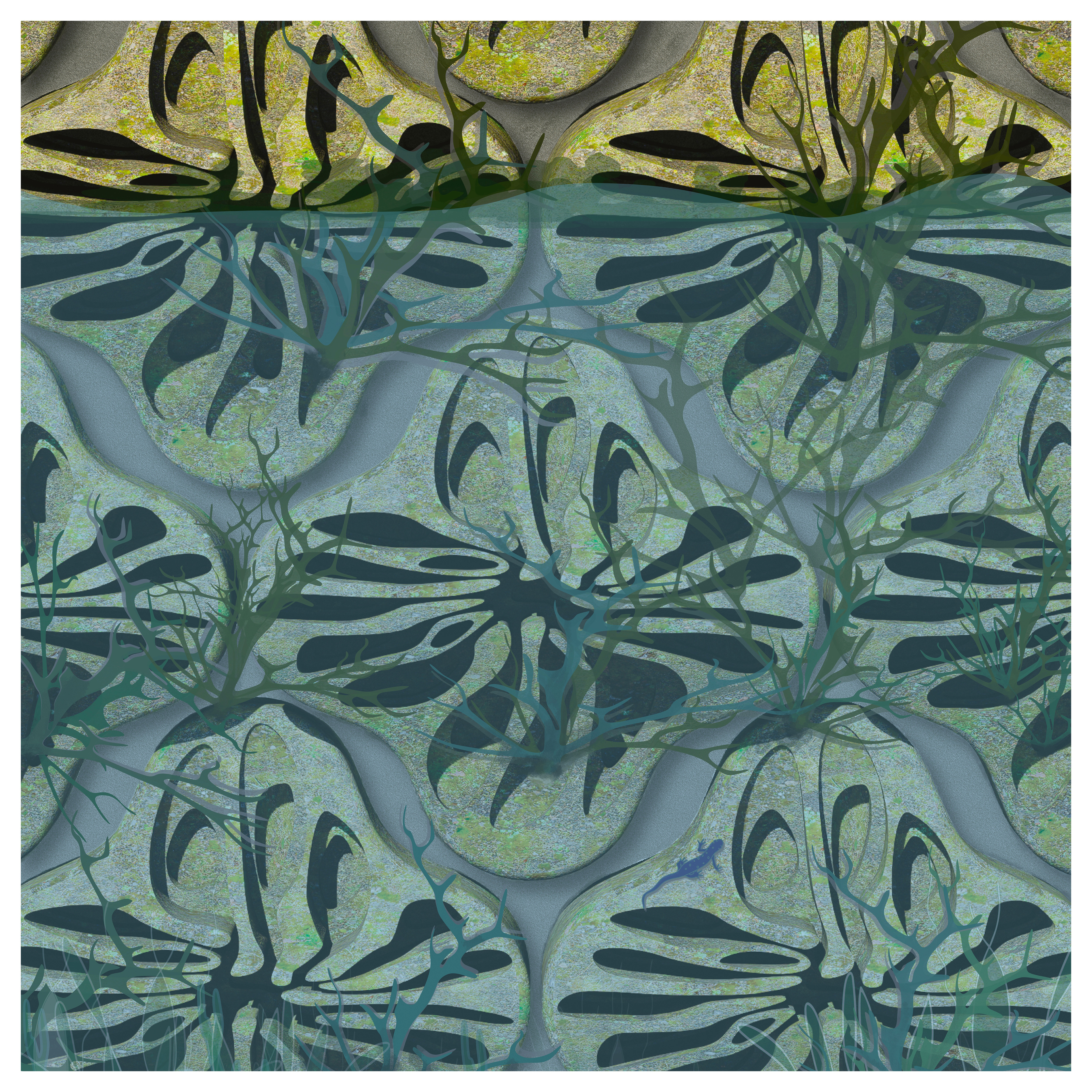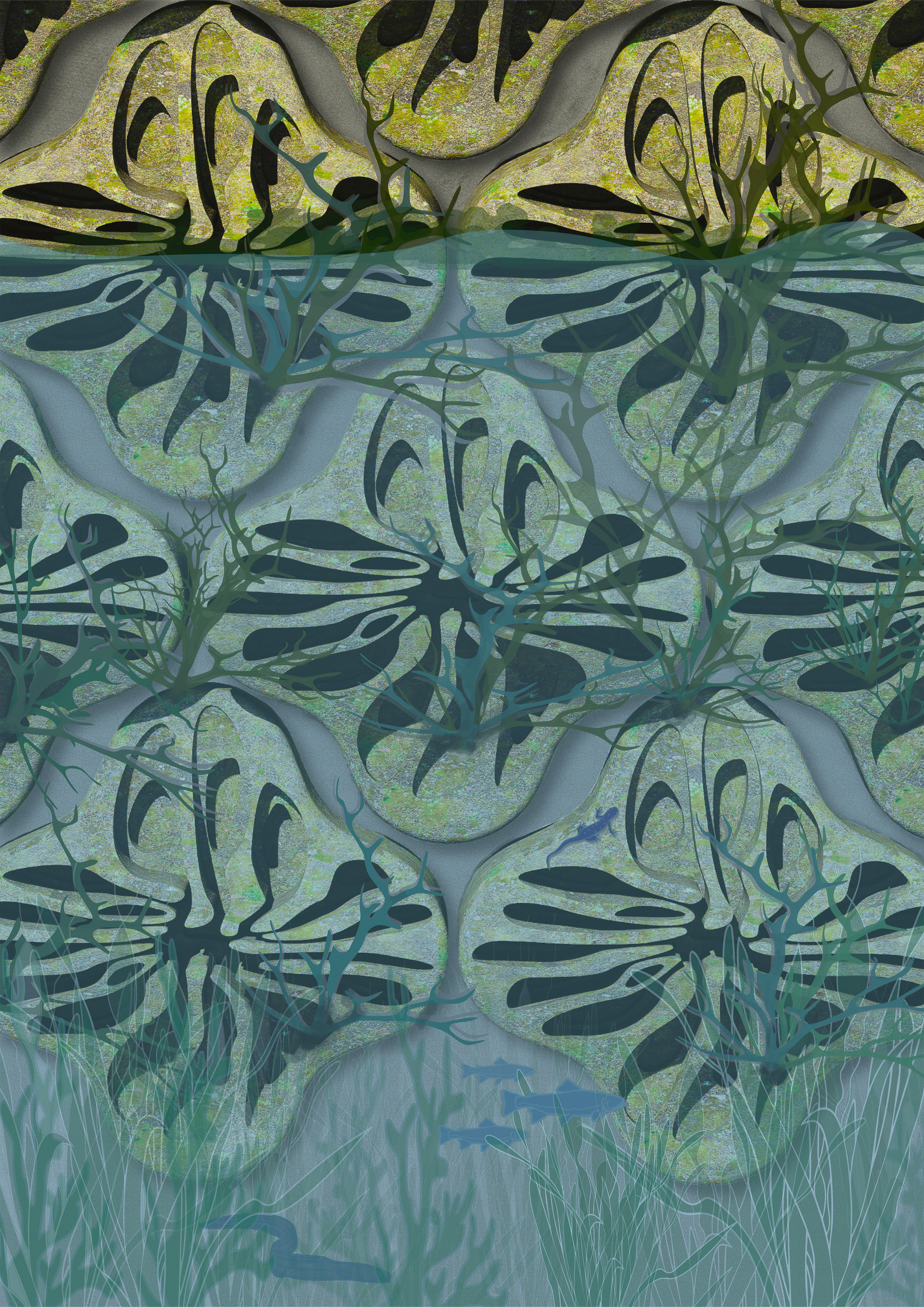In urban areas, rivers are often one of the few continuous natural spaces remaining. They act as corridors, allowing wildlife to move through built environments where green space is limited or fragmented. Artificial riverbanks, however, lack the complexity and ecological function of natural ones. This project proposes modular structures that hold onto artificial banks, aiming to restore habitat and increase biodiversity.
Inspired by erosion or plant cell patterns, these textures help trap moisture and organic matter, allowing seeds to settle and roots to grip. These tiles are designed to replicate the conditions needed for a healthy marginal fringe, the band of vegetation that grows along the edge of rivers, ponds, or wetlands.
Initial tests with 3D-printed clay helped evaluate how different forms and surface textures perform physically. This was followed by CNC milling and laminating each layer together to produce a full scale prototype.
Designed to be adaptable, the tile is not built into the structure of the bank but instead uses a slot-and-hook fixture that allows it to be installed, removed, and reapplied across multiple sites.
This project explores how digital fabrication techniques, such as 3D printing, can increase habitat complexity while minimising production costs. As an emerging tool in ecological and architectural design, 3D printing allows for scalable, organic forms to be created directly from digital models. It celebrates how technology can be used to support, rather than disrupt, the conservation of wildlife.
The tile is printed using geopolymer concrete, a lower-carbon alternative to traditional concrete. The use of alternative materials in 3D printing is a growing area of research, opening up new possibilities for ecological design.







